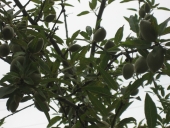posted 7 years ago
Hi everyone,
I live in the Pacific Northwest (western Washington). As I've been planting trees this past year, I've come across several that have edible leaves or other parts that can be used as a vegetable. I'm interested in learning about other varieties that could possibly supplement my garden production in the future.
The vegetable-producing trees that I know about so far are:
1. Chinese Fragrant Spring Tree (leaves are said to taste like leeks)
2. Siberian Peashrub
3. Linden trees (leaves and flowers are said to be good to eat)
4. Yellowhorn trees (conflicting information, but some sources say the leaves and blossoms are both edible, in addition to the nuts).
5. Mulberry trees. I just learned today the young leaves are supposed to be good to eat for human beings, but I'd never heard that before.
Please let me know if you have experience eating these, or if you have any new varieties to share
When you reach your lowest point, you are open to the greatest change.
-Avatar Aang








